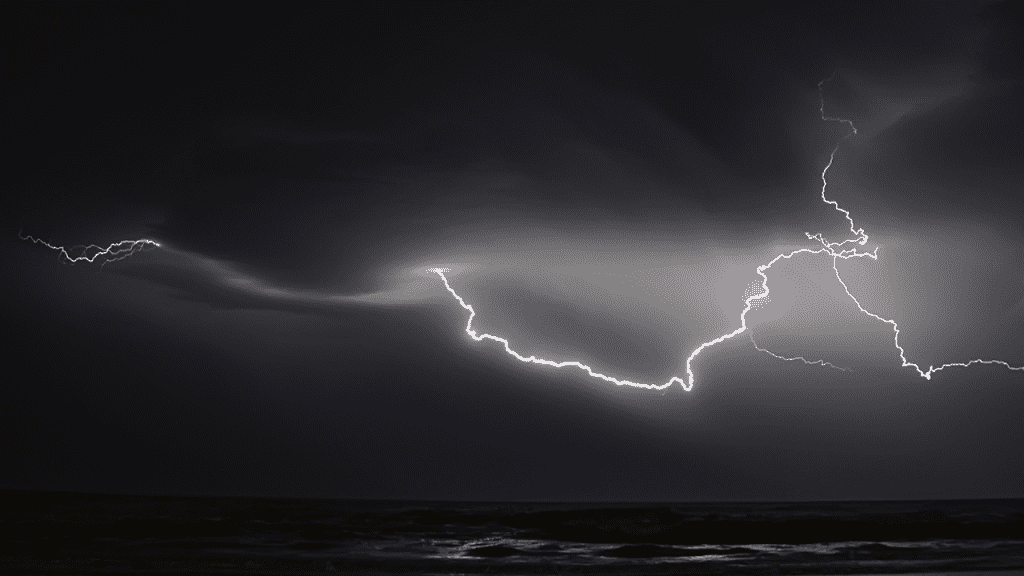Lightning could have an important ecological function, a duo of new paper reports. According to the findings, such discharges play an important role in clearing gases like methane from the atmosphere.

As we all know, thunderbolt and lightning, very, very frightening. However, they also seem to be quite fresh. The immense heat and energy released by lightning bolts break apart nitrogen and oxygen molecules in the air, which mix into hydroxyl radicals and hydroperoxyl radical — OH and HO2, respectively. In turn, these highly reactive chemical compounds go on to alter the atmosphere’s chemistry, in particular jump-starting the processes that degrade greenhouse gas compounds such as methane.
Bolt Cleaning
“Through history, people were only interested in lightning bolts because of what they could do on the ground,” says William H. Brune, distinguished professor of meteorology at Penn State and co-author on both of the new papers. “Now there is increasing interest in the weaker electrical discharges in thunderstorms that lead to lightning bolts.”
Data for this research was collected by an instrument plane flown above Colorado and Oklahoma in 2012. The plane followed thunderstorms and lightning discharges in order to understand their effect on the atmosphere.
Initially, the team assumed that the spikes in OH and HO2 signals (atmospheric levels) their devices were picking up must be errors, so they removed them from the dataset to study at a later time. The issue was that the instrument recorded high levels of hydroxyl and hydroperoxyl in stretches of the cloud where there was no visible lightning. A few years ago, Brune actually took the time to analyze it.
Working with a graduate student and research associate, he showed that the spikes could be produced both by sparks and “subvisible discharges” in the lab. After this, they performed a fresh analysis of the thunderstorm and lightning data from 2012.
“With the help of a great undergraduate intern,” said Brune, “we were able to link the huge signals seen by our instrument flying through the thunderstorm clouds to the lightning measurements made from the ground.”
Planes avoid flying through the center of thunderstorms because it’s simply dangerous for them, Brune explains, but they can be used to sample the top portion of the clouds which spread in the direction of the wind — this area of a storm is known as ‘the anvil’. Visible lightning is formed in the part of the anvil near the thunderstorm core.
Most bolts never strike the ground, he adds. This lightning is particularly important for affecting ozone and some greenhouse gas in the upper atmosphere. While we did know that lightning can split water to form hydroxyl and hydroperoxyl, this is the first time it has actually been observed in a live thunderstorm.
The researchers found hydroxyl and hydroperoxyl in areas with subvisible lightning, but very little evidence of ozone and no signs of nitric oxide (which requires visible lightning to form) in these areas. If this type of lightning occurs routinely, its outputs of hydroxyl and hydroperoxyl should be included in atmospheric models (they are not, currently).
Both of these compounds interact with some gases like methane, breaking them down through chemical reactions, and preventing them from realizing their full greenhouse potential.
“Lightning-generated OH (hydroxyl) in all storms happening globally can be responsible for a highly uncertain but substantial 2% to 16% of global atmospheric OH oxidation,” the team explains.
“These results are highly uncertain, partly because we do not know how these measurements apply to the rest of the globe,” said Brune. “We only flew over Colorado and Oklahoma. Most thunderstorms are in the tropics. The whole structure of high plains storms is different than those in the tropics. Clearly, we need more aircraft measurements to reduce this uncertainty.”
The first paper “Extreme oxidant amounts produced by lightning in storm clouds” has been published in the journal Science.
The second paper, “Electrical Discharges Produce Prodigious Amounts of Hydroxyl and Hydroperoxyl Radicals” has been published in the Journal of Geophysical Research: Atmospheres.


